File Info
| Exam | Palo Alto Networks Certified Cybersecurity Entry-Level Technician |
| Number | PCCET |
| File Name | Palo Alto Networks.PCCET.VCEplus.2025-02-05.85q.tqb |
| Size | 946 KB |
| Posted | Feb 05, 2025 |
| Download | Palo Alto Networks.PCCET.VCEplus.2025-02-05.85q.tqb |
How to open VCEX & EXAM Files?
Files with VCEX & EXAM extensions can be opened by ProfExam Simulator.
Coupon: MASTEREXAM
With discount: 20%
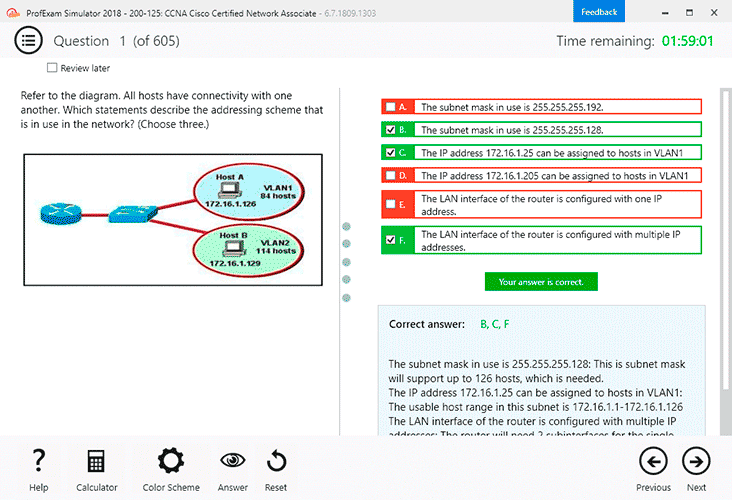
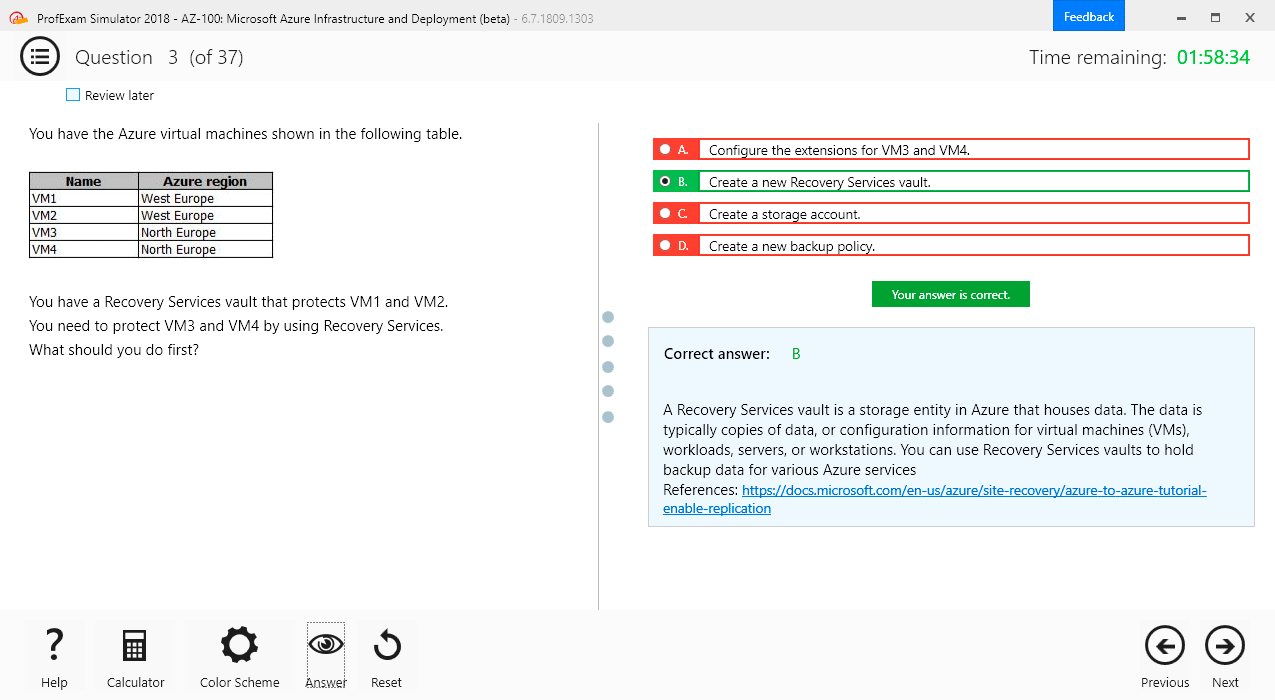
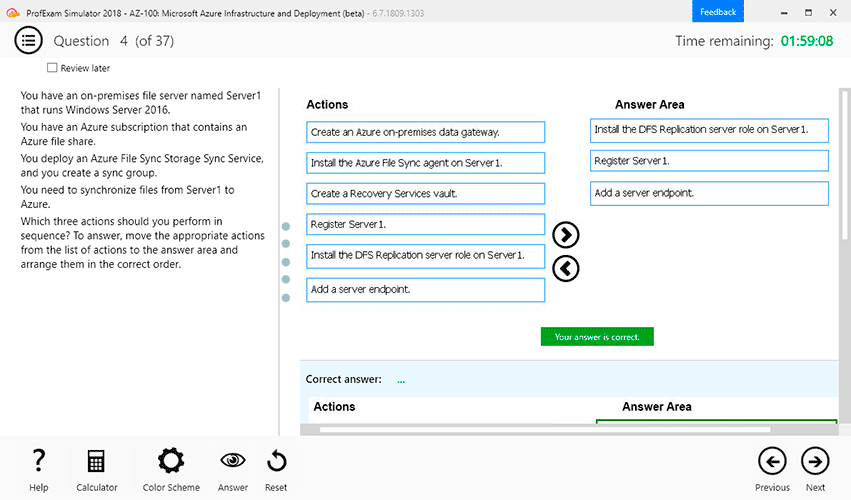
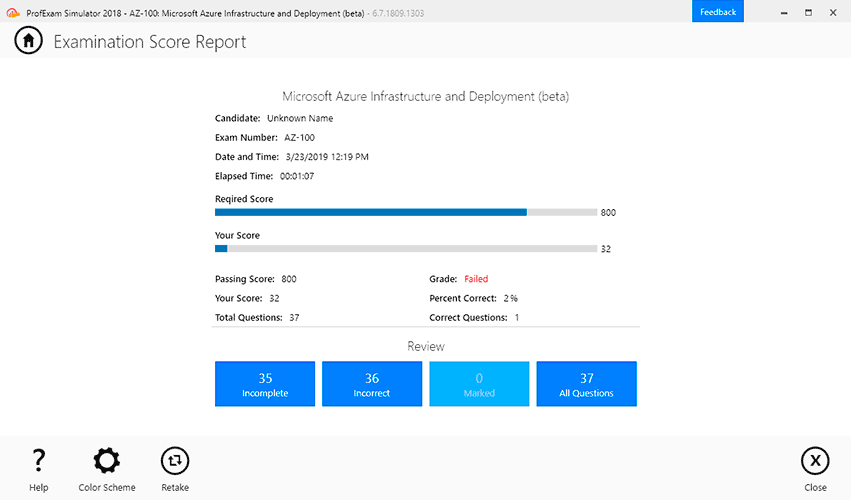
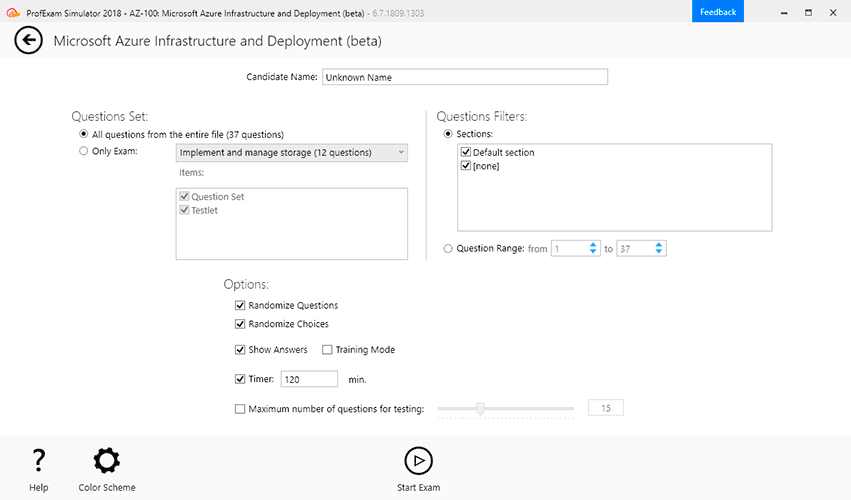

Demo Questions
Question 1
Which two pieces of information are considered personally identifiable information (PII)? (Choose two.)
- Birthplace
- Login 10
- Profession
- Name
Correct answer: AD
Explanation:
Personally identifiable information (PII) is any data that can be used to identify someone.All information that directly or indirectly links to a person is considered PII1. Among PII, some pieces of information are more sensitive than others.Sensitive PII is sensitive information that directly identifies an individual and could cause significant harm if leaked or stolen2.Birthplace and name are examples of sensitive PII, as they can be used to distinguish or trace an individual's identity, either alone or when combined with other information3. Login 10 and profession are not considered sensitive PII, as they are not unique to a person and do not reveal their identity.Login 10 is a non-sensitive PII that is easily accessible from public sources, while profession is not a PII at all, as it does not link to a specific individual4.Reference:1: What is PII (personally identifiable information)? - Cloudflare2: What is Personally Identifiable Information (PII)? | IBM3: personally identifiable information - Glossary | CSRC 4: What Is Personally Identifiable Information (PII)? Types and Examples Personally identifiable information (PII) is any data that can be used to identify someone.All information that directly or indirectly links to a person is considered PII1. Among PII, some pieces of information are more sensitive than others.Sensitive PII is sensitive information that directly identifies an individual and could cause significant harm if leaked or stolen2.Birthplace and name are examples of sensitive PII, as they can be used to distinguish or trace an individual's identity, either alone or when combined with other information3. Login 10 and profession are not considered sensitive PII, as they are not unique to a person and do not reveal their identity.Login 10 is a non-sensitive PII that is easily accessible from public sources, while profession is not a PII at all, as it does not link to a specific individual4.Reference:
1: What is PII (personally identifiable information)? - Cloudflare
2: What is Personally Identifiable Information (PII)? | IBM
3: personally identifiable information - Glossary | CSRC
4: What Is Personally Identifiable Information (PII)? Types and Examples
Question 2
TCP is the protocol of which layer of the OSI model?
- Transport
- Session
- Data Link
- Application
Correct answer: A
Explanation:
TCP stands for Transmission Control Protocol, and it is one of the main protocols used in the internet.TCP provides reliable, ordered, and error-free delivery of data between applications1. In terms of the OSI model, TCP is a transport-layer protocol.The transport layer is the fourth layer of the OSI model, and it is responsible for establishing end-to-end connections, segmenting data into packets, and ensuring reliable and efficient data transfer2.The transport layer also provides flow control, congestion control, and error detection and correction mechanisms2.TCP is not the only transport-layer protocol; another common one is UDP (User DatagramProtocol), which is faster but less reliable than TCP3.Reference:1: TCP/IP TCP, UDP, and IP protocols - IBM2: Transport Layer | Layer 4 | The OSI-Model3: TCP/IP Model vs. OSI Model | Similarities and Differences - Fortinet TCP stands for Transmission Control Protocol, and it is one of the main protocols used in the internet.TCP provides reliable, ordered, and error-free delivery of data between applications1. In terms of the OSI model, TCP is a transport-layer protocol.The transport layer is the fourth layer of the OSI model, and it is responsible for establishing end-to-end connections, segmenting data into packets, and ensuring reliable and efficient data transfer2.The transport layer also provides flow control, congestion control, and error detection and correction mechanisms2.TCP is not the only transport-layer protocol; another common one is UDP (User Datagram
Protocol), which is faster but less reliable than TCP3.Reference:1: TCP/IP TCP, UDP, and IP protocols - IBM2: Transport Layer | Layer 4 | The OSI-Model3: TCP/IP Model vs. OSI Model | Similarities and Differences - Fortinet
Question 3
What is the purpose of SIEM?
- Securing cloud-based applications
- Automating the security team's incident response
- Real-time monitoring and analysis of security events
- Filtering webpages employees are allowed to access
Correct answer: C
Explanation:
SIEM stands for security information and event management. It is a technology that collects, analyzes, and reports on security-related data from various sources within an organization's network. The purpose of SIEM is to provide real-time monitoring and analysis of security events, such as user logins, file access, and changes to critical system files. SIEM helps security teams to detect and respond to potential threats, as well as to meet compliance requirements and improve their cybersecurity posture.Reference:What Is Security Information and Event Management (SIEM)? - Palo Alto Networks,What is a SIEM Solution? - Palo Alto Networks,Integrate IoT Security with SIEM - Palo Alto Networks SIEM stands for security information and event management. It is a technology that collects, analyzes, and reports on security-related data from various sources within an organization's network. The purpose of SIEM is to provide real-time monitoring and analysis of security events, such as user logins, file access, and changes to critical system files. SIEM helps security teams to detect and respond to potential threats, as well as to meet compliance requirements and improve their cybersecurity posture.Reference:What Is Security Information and Event Management (SIEM)? - Palo Alto Networks,What is a SIEM Solution? - Palo Alto Networks,Integrate IoT Security with SIEM - Palo Alto Networks
Question 4
Which network firewall primarily filters traffic based on source and destination IP address?
- Proxy
- Stateful
- Stateless
- Application
Correct answer: C
Explanation:
A stateless firewall is a network firewall that primarily filters traffic based on source and destination IP address, as well as port numbers and protocols. A stateless firewall does not keep track of the state or context of network connections, and only inspects packet headers. A stateless firewall is faster and simpler than a stateful firewall, but it is less secure and flexible. A stateless firewall cannot block complex attacks or inspect packet contents for malicious payloads.Reference:What Is a Packet Filtering Firewall? - Palo Alto Networks,Common IP Filtering Techniques -- APNIC,What is IP filtering? - Secure Network Traffic Management A stateless firewall is a network firewall that primarily filters traffic based on source and destination IP address, as well as port numbers and protocols. A stateless firewall does not keep track of the state or context of network connections, and only inspects packet headers. A stateless firewall is faster and simpler than a stateful firewall, but it is less secure and flexible. A stateless firewall cannot block complex attacks or inspect packet contents for malicious payloads.Reference:What Is a Packet Filtering Firewall? - Palo Alto Networks,Common IP Filtering Techniques -- APNIC,What is IP filtering? - Secure Network Traffic Management
Question 5
Which capability of a Zero Trust network security architecture leverages the combination of application, user, and content identification to prevent unauthorized access?
- Cyber threat protection
- Inspection of all traffic
- Least privileges access control
- Network segmentation
Correct answer: C
Explanation:
Least privileges access control is the capability of a Zero Trust network security architecture that leverages the combination of application, user, and content identification to prevent unauthorized access. Least privileges access control means that users and devices are only granted the permissions they need to perform their tasks, and nothing more. This helps reduce the attack surface and makes it more difficult for attackers to gain access to sensitive data or resources. Least privileges access control is based on the principle of Zero Trust, which assumes that there are attackers both within and outside of the network, so no users or devices should be automatically trusted. Zero Trust verifies user identity and privileges as well as device identity and security, and requires end-to-end encryption. Least privileges access control also involves careful management of user permissions and network segmentation, which limit the amount of information and length of time people can access something, and contain the damage if someone does get unauthorized access.Reference:What Is Zero Trust Architecture? | Microsoft Security,Zero Trust security | What is a Zero Trust network? | Cloudflare,What is Zero Trust Architecture? | SANS Institute,What Is a Zero Trust Architecture? | Zscaler,What is Zero Trust Architecture (ZTA)? - CrowdStrike. Least privileges access control is the capability of a Zero Trust network security architecture that leverages the combination of application, user, and content identification to prevent unauthorized access. Least privileges access control means that users and devices are only granted the permissions they need to perform their tasks, and nothing more. This helps reduce the attack surface and makes it more difficult for attackers to gain access to sensitive data or resources. Least privileges access control is based on the principle of Zero Trust, which assumes that there are attackers both within and outside of the network, so no users or devices should be automatically trusted. Zero Trust verifies user identity and privileges as well as device identity and security, and requires end-to-end encryption. Least privileges access control also involves careful management of user permissions and network segmentation, which limit the amount of information and length of time people can access something, and contain the damage if someone does get unauthorized access.
Reference:What Is Zero Trust Architecture? | Microsoft Security,Zero Trust security | What is a Zero Trust network? | Cloudflare,What is Zero Trust Architecture? | SANS Institute,What Is a Zero Trust Architecture? | Zscaler,What is Zero Trust Architecture (ZTA)? - CrowdStrike.
Question 6
Which security component can detect command-and-control traffic sent from multiple endpoints within a corporate data center?
- Personal endpoint firewall
- Port-based firewall
- Next-generation firewall
- Stateless firewall
Correct answer: C
Explanation:
A next-generation firewall (NGFW) is a security component that can detect command-and-control (C2) traffic sent from multiple endpoints within a corporate data center. A NGFW is a network device that combines traditional firewall capabilities with advanced features such as application awareness, intrusion prevention, threat intelligence, and cloud-based analysis. A NGFW can identify and block C2 traffic by inspecting the application layer protocols, signatures, and behaviors of the network traffic, as well as correlating the traffic with external sources of threat intelligence. A NGFW can also leverage inline cloud analysis to detect and prevent zero-day C2 threats in real-time. A NGFW can provide granular visibility and control over the network traffic, as well as generate alerts and reports on the C2 activity.Reference:Palo Alto Networks Certified Cybersecurity Entry-level Technician (PCCET)Command and Control, Tactic TA0011 - Enterprise | MITRE ATT&CKAdvanced Threat Prevention: Inline Cloud Analysis - Palo Alto Networks A next-generation firewall (NGFW) is a security component that can detect command-and-control (C2) traffic sent from multiple endpoints within a corporate data center. A NGFW is a network device that combines traditional firewall capabilities with advanced features such as application awareness, intrusion prevention, threat intelligence, and cloud-based analysis. A NGFW can identify and block C2 traffic by inspecting the application layer protocols, signatures, and behaviors of the network traffic, as well as correlating the traffic with external sources of threat intelligence. A NGFW can also leverage inline cloud analysis to detect and prevent zero-day C2 threats in real-time. A NGFW can provide granular visibility and control over the network traffic, as well as generate alerts and reports on the C2 activity.
Reference:
Palo Alto Networks Certified Cybersecurity Entry-level Technician (PCCET)
Command and Control, Tactic TA0011 - Enterprise | MITRE ATT&CK
Advanced Threat Prevention: Inline Cloud Analysis - Palo Alto Networks
Question 7
Identify a weakness of a perimeter-based network security strategy to protect an organization's endpoint systems.
- It cannot identify command-and-control traffic
- It assumes that all internal devices are untrusted
- It assumes that every internal endpoint can be trusted
- It cannot monitor all potential network ports
Correct answer: C
Explanation:
A perimeter-based network security strategy relies on firewalls, routers, and other devices to create a boundary between the internal network and the external network. This strategy assumes that every internal endpoint can be trusted, and that any threat comes from outside the network. However, this assumption is flawed, as internal endpoints can also be compromised by malware, phishing, insider attacks, or other methods. Once an attacker gains access to an internal endpoint, they can use it to move laterally within the network, bypassing the perimeter defenses. Therefore, a perimeter-based network security strategy is not sufficient to protect an organization's endpoint systems, and a more comprehensive approach, such as Zero Trust, is needed.Reference:Palo Alto Networks Certified Cybersecurity Entry-level Technician (PCCET)Traditional perimeter-based network defense is obsolete---transform to a Zero Trust modelWhat is Network Perimeter Security? Definition and Components | Acalvio A perimeter-based network security strategy relies on firewalls, routers, and other devices to create a boundary between the internal network and the external network. This strategy assumes that every internal endpoint can be trusted, and that any threat comes from outside the network. However, this assumption is flawed, as internal endpoints can also be compromised by malware, phishing, insider attacks, or other methods. Once an attacker gains access to an internal endpoint, they can use it to move laterally within the network, bypassing the perimeter defenses. Therefore, a perimeter-based network security strategy is not sufficient to protect an organization's endpoint systems, and a more comprehensive approach, such as Zero Trust, is needed.
Reference:
Palo Alto Networks Certified Cybersecurity Entry-level Technician (PCCET)
Traditional perimeter-based network defense is obsolete---transform to a Zero Trust model
What is Network Perimeter Security? Definition and Components | Acalvio
Question 8
What is the recommended method for collecting security logs from multiple endpoints?
- Leverage an EDR solution to request the logs from endpoints.
- Connect to the endpoints remotely and download the logs.
- Configure endpoints to forward logs to a SIEM.
- Build a script that pulls down the logs from all endpoints.
Correct answer: C
Explanation:
A SIEM (Security Information and Event Management) is a system that collects, analyzes, and correlates security logs from multiple sources, such as endpoints, firewalls, servers, etc. A SIEM can provide a centralized and comprehensive view of the security posture of an organization, as well as detect and respond to threats. Configuring endpoints to forward logs to a SIEM is the recommended method for collecting security logs from multiple endpoints, as it reduces the network bandwidth and storage requirements, simplifies the log management process, and enables faster and more effective security analysis. Leveraging an EDR (Endpoint Detection and Response) solution to request the logs from endpoints is not recommended, as it may cause performance issues on the endpoints, increase the network traffic, and create a dependency on the EDR solution. Connecting to the endpoints remotely and downloading the logs is not recommended, as it is a manual and time-consuming process, prone to errors and inconsistencies, and may expose the endpoints to unauthorized access. Building a script that pulls down the logs from all endpoints is not recommended, as it requires technical skills and maintenance, may not be compatible with different endpoint platforms, and may introduce security risks if the script is compromised or misconfigured.Reference:Palo Alto Networks Certified Cybersecurity Entry-level Technician (PCCET) - Palo Alto NetworksFundamentals of Security Operations Center (SOC)10 Palo Alto Networks PCCET Exam Practice Questions - CBT Nuggets A SIEM (Security Information and Event Management) is a system that collects, analyzes, and correlates security logs from multiple sources, such as endpoints, firewalls, servers, etc. A SIEM can provide a centralized and comprehensive view of the security posture of an organization, as well as detect and respond to threats. Configuring endpoints to forward logs to a SIEM is the recommended method for collecting security logs from multiple endpoints, as it reduces the network bandwidth and storage requirements, simplifies the log management process, and enables faster and more effective security analysis. Leveraging an EDR (Endpoint Detection and Response) solution to request the logs from endpoints is not recommended, as it may cause performance issues on the endpoints, increase the network traffic, and create a dependency on the EDR solution. Connecting to the endpoints remotely and downloading the logs is not recommended, as it is a manual and time-consuming process, prone to errors and inconsistencies, and may expose the endpoints to unauthorized access. Building a script that pulls down the logs from all endpoints is not recommended, as it requires technical skills and maintenance, may not be compatible with different endpoint platforms, and may introduce security risks if the script is compromised or misconfigured.
Reference:
Palo Alto Networks Certified Cybersecurity Entry-level Technician (PCCET) - Palo Alto Networks
Fundamentals of Security Operations Center (SOC)
10 Palo Alto Networks PCCET Exam Practice Questions - CBT Nuggets
Question 9
What does ''forensics'' refer to in a Security Operations process?
- Collecting raw data needed to complete the detailed analysis of an investigation
- Validating cyber analysts' backgrounds before hiring
- Reviewing information about a broad range of activities
- Analyzing new IDS/IPS platforms for an enterprise
Correct answer: A
Explanation:
Forensics in a Security Operations process refers to collecting raw data needed to complete the detailed analysis of an investigation. Forensic analysis is a crucial step in identifying, investigating, and documenting the cause, course, and consequences of a security incident or violation. Forensic analysis involves various techniques and tools to extract, preserve, analyze, and present evidence in a structured and acceptable format. Forensic analysis can be used for legal compliance, auditing, incident response, and threat intelligence purposes.Reference:Cyber Forensics Explained: Reasons, Phases & Challenges of Cyber ForensicsSOC Processes, Operations, Challenges, and Best PracticesWhat is Digital Forensics | Phases of Digital Forensics | EC-Council Forensics in a Security Operations process refers to collecting raw data needed to complete the detailed analysis of an investigation. Forensic analysis is a crucial step in identifying, investigating, and documenting the cause, course, and consequences of a security incident or violation. Forensic analysis involves various techniques and tools to extract, preserve, analyze, and present evidence in a structured and acceptable format. Forensic analysis can be used for legal compliance, auditing, incident response, and threat intelligence purposes.
Reference:
Cyber Forensics Explained: Reasons, Phases & Challenges of Cyber Forensics
SOC Processes, Operations, Challenges, and Best Practices
What is Digital Forensics | Phases of Digital Forensics | EC-Council
Question 10
If an endpoint does not know how to reach its destination, what path will it take to get there?
- The endpoint will broadcast to all connected network devices.
- The endpoint will not send the traffic until a path is clarified.
- The endpoint will send data to the specified default gateway.
- The endpoint will forward data to another endpoint to send instead.
Correct answer: C
Explanation:
If an endpoint does not know how to reach its destination, it will send data to the specified default gateway. A default gateway is a device that routes traffic from a local network to other networks or the internet. The endpoint will use the default gateway's IP address as the next hop for packets that are destined for unknown or remote networks. The default gateway will then forward the packets to the appropriate destination or another gateway, based on its routing table.Reference:Fundamentals of Network Security, Module 2: Networking Concepts, Lesson 2: IP Addressing and Routing1 PCCET Study Guide, Section 2.2: Describe IP Addressing and Routing2 If an endpoint does not know how to reach its destination, it will send data to the specified default gateway. A default gateway is a device that routes traffic from a local network to other networks or the internet. The endpoint will use the default gateway's IP address as the next hop for packets that are destined for unknown or remote networks. The default gateway will then forward the packets to the appropriate destination or another gateway, based on its routing table.
Reference:
Fundamentals of Network Security, Module 2: Networking Concepts, Lesson 2: IP Addressing and Routing1 PCCET Study Guide, Section 2.2: Describe IP Addressing and Routing2

